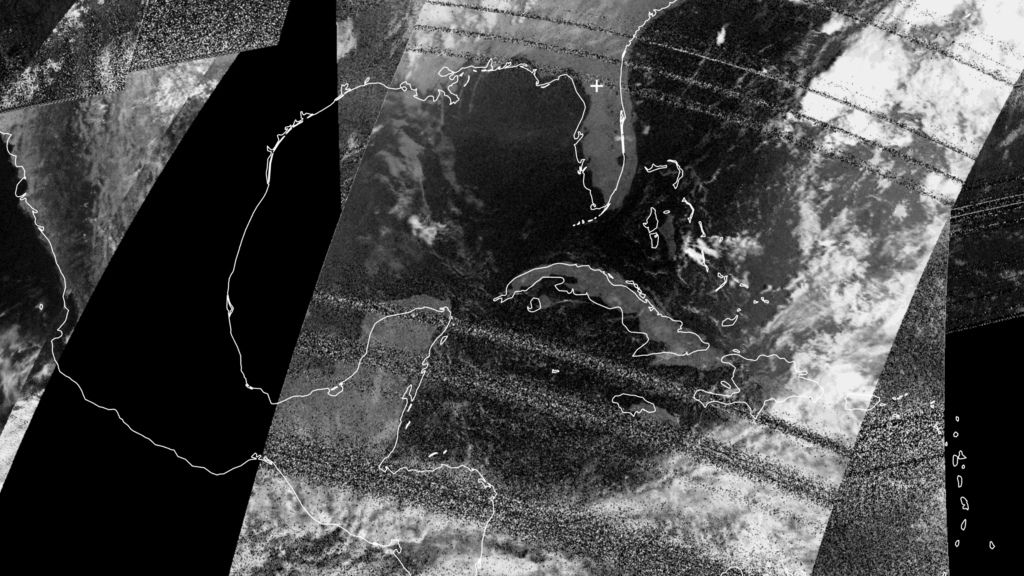
Year of Weather
Call for participation
🌪️ Year of Weather
From 1 September 2025 – 1 September 2026, take part to help build a collective, living record of planetary weather.
Use the Contributor Form to upload your WAV recording of NOAA-15, NOAA-18 and NOAA-18 to the Public Archive. All contributions to the Public Archive between September 2024 – September 2025 will automatically be part of the Year of Weather.
Don’t yet have a satellite ground station? Use open-weather’s resources, including our DIY Satellite Ground Station workshop resource to get started.
🛰️ End-of-life Nowcast, 15 June 2025
On Sunday 15 June (in your local timezone), capture a NOAA satellite image over your location. You are welcome to choose the pass from NOAA-15, -18 or -19 that works best for you.
Use our Contributor Form to upload your WAV file along with an optional (but highly appreciated) weather note and documentation photographs to the Public Archive. All contributions on Sunday 15 June will automatically become part of the nowcast.
Automatic Ground Station hosts should liaise with Sasha and Soph to attached weather notes and documentation photographs to their images on 15 June.
Open-weather will combine all satellite imagery, text and photograph contributions submitted to the Public Archive from around the world to produce a ‘nowcast’ to be released after 16 June via the Year of Weather map.
To ask questions please don’t hesitate to email us.
Read about the ‘end-of-life nowcast’ in our newsletter.
The Year of Weather amplifies and asserts public access to environmental knowledge.
Over twelve months open-weather is activating a planetary-scale network of DIY Satellite Ground Stations to capture the last transmissions of three NOAA weather satellites as the planet exceeds 1.5 C above pre-industrial levels.
Public ownership and access to environmental knowledge is threatened by attempts to dismantle and privatise government agencies, such as the US government’s National Oceanic and Atmospheric Administration (NOAA) that has provided satellite images to ground stations internationally since the 70s. In 2025, this political climate coincides with the end of a contract to maintain NOAA’s last three satellites to transmit publicly accessible analogue weather images.
We are building a living, collective map of planetary weather to record these historic changes.
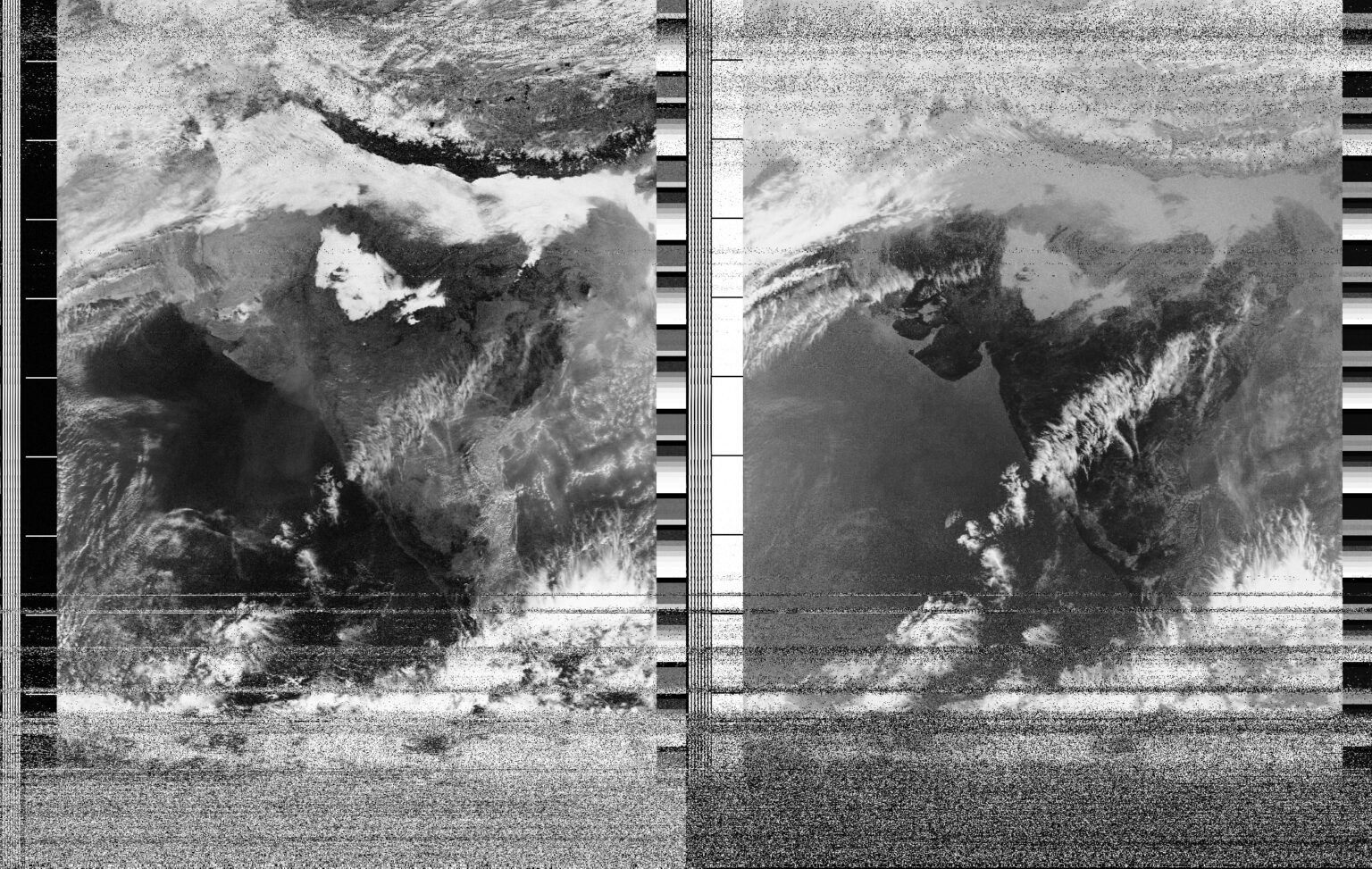
In the Year of Weather, together with contributors and collaborators, we are asking: What would a live, volunteer-generated map of planetary weather look and feel like? What is the political potential of archiving satellite imagery and situated weather observations at a time when publicly-funded infrastructures for earth observation are under threat?
In the wake Typhoons Yagi and Dikeledi, extreme heat stress in the Mediterranean and the Greater Horn of Africa, the lowest ever-recorded Arctic Sea ice, and the Los Angeles fires, what weather knowledges should we be amplifying in our communities, so that we can make sense of a changing climate? What translocal infrastructures can we build to aid this work?
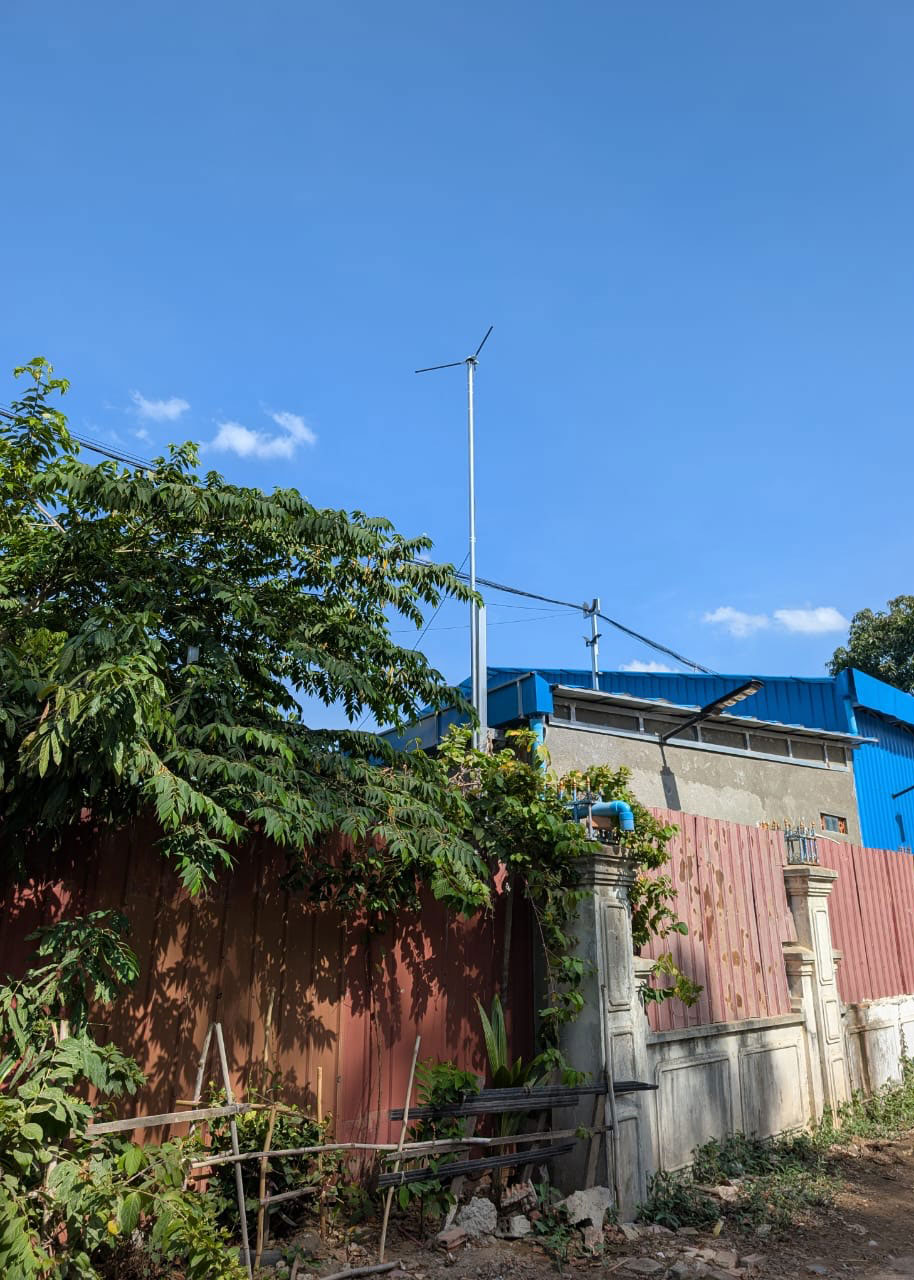
The Year of Weather builds on open-weather’s one-day earth imaging events such as the COP26 Nowcast to explore the potential of a live network and map.
To make the project possible, we have developed a unique browser-based satellite image decoder for NOAA Automatic Picture Transmissions. To widen access, we designed and produced our own 3D-printed, Raspberry-Pi powered Automatic Ground Stations.
Moreover, through workshops and the sharing of these resources we have grown a geographically diverse community of DIY Satellite Ground Station operators. This network currently numbers more-than-one hundred DIY Satellite Ground Station operators including seaweed harvesters and educators in Cornwall, England; university students in Pune, India; and sound artists in Valparaiso, Chile.
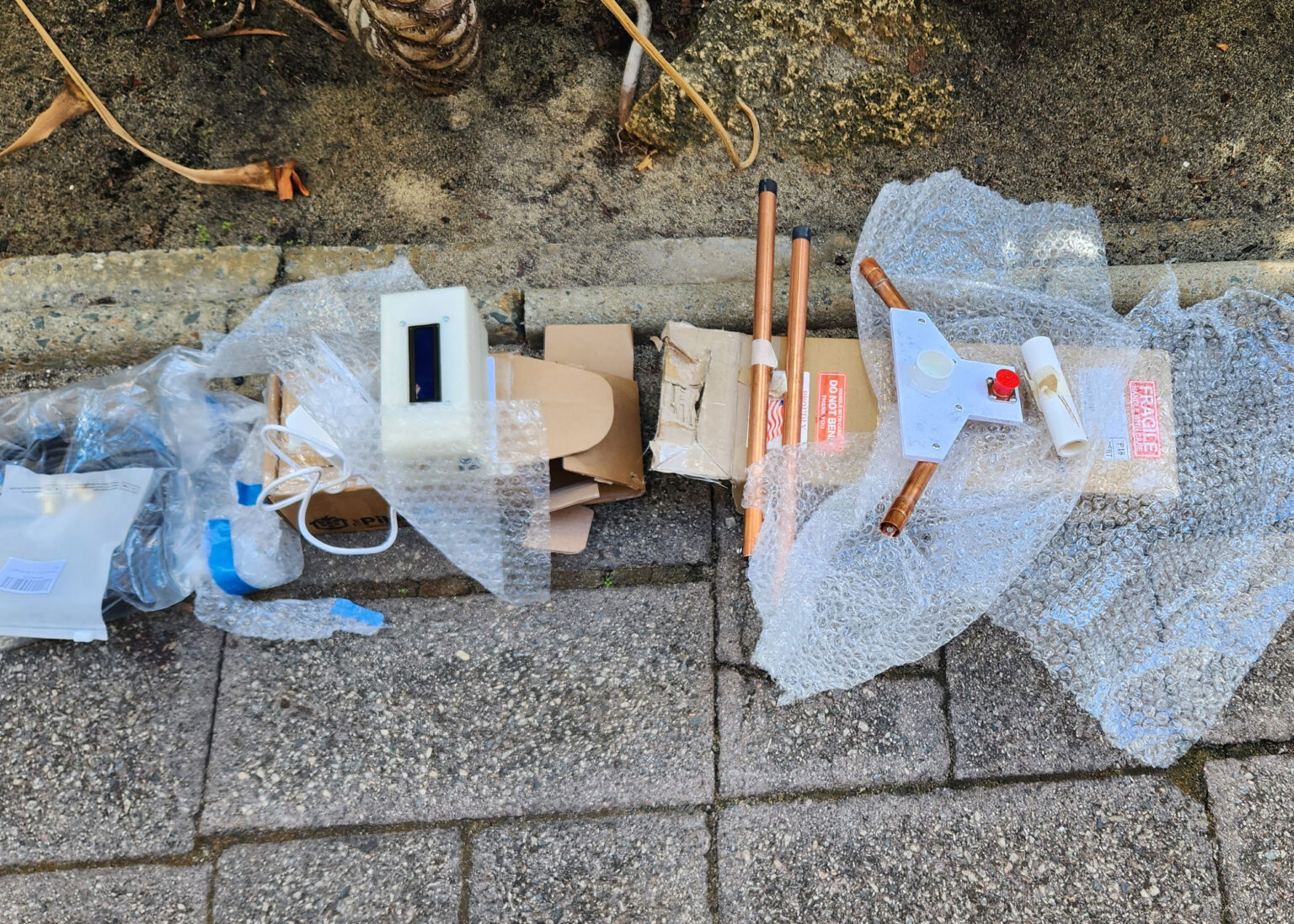
Automatic Ground Station Hosts
The following Automatic Ground Station hosts are confirmed (A to Z):
Alison Scott
Arbroath, Scotland
Alison Scott is a long-term collaborator of open-weather, artist, writer and art-worker. Her research-led work is driven by film, performance and writing, and forefronts collaborative, speculative approaches to knowledge production. Recent projects – drawing on encounters with weather, oil, land, and the idea of the commons – engage with aspects of environmental politics on an everyday, situated level.
Centre for People, Place and Planet
Perth, Australia
The Centre for People, Place and Planet is a Strategic Research Centre at Edith Cowan University aiming to reconnect people, ecosystems, and place-based knowledges for universal well-being. Staff member Jo Pollitt and her group of PhD students are hosting an open-weather station to contribute to the Year of Weather.
COSMOS Astronomy Club
Pune, India
The COSMOS Astronomy Club is a group of students and staff interested in radio astronomy and earth observation. Their extensive antenna array and university ground station is deployed, in part, to contribute NOAA satellite images to the Year of Weather.
Cyprus Amateur Radio Society
Nicosia, Cyprus
More information about the Cyprus Amateur Radio Society to come.
Filip Shatlan and Diana Engelmann
Gainesville, United States
Secondary school student Filip Shatlan and community college professor Diana Engelmann have hosted an open-weather station to contribute to the Year of Weather since December 2024.
Foto Colectania, Hangar and Radio Web MACBA
Barcelona, Spain
Foto Colectania is a non-profit organisation, founded in Barcelona in 2002, with the aim of disseminating photography and introducing it within the social, artistic and educational field in our country. The programs undertaken at the Foundation, from exhibitions to activities and publications, are based on the creation of an innovative, participatory and inclusive project focused on thought around image and its basic foundations, enhancing its communicative capacity and its suitability to generate critical thinking.
Founded in 1997, Hangar is an artist-run initiative committed to prototyping, updating, and sustaining the essential conditions for artistic production and research, understanding these activities as critical speculative practices that respond to and innovate within contemporary debates and urgencies.
Ràdio Web MACBA is a non-profit, cultural communication radiophonic project based at MACBA Museu d’Art Contemporani de Barcelona. Operating since 2006, it was the first podcasting project run by an art institution in Spain. Since then, it has engaged in open dialogue with some of the most significant international actors in the field, operating at the intersection of art, radiophonic practices, and experimental music.
Heidi Neilson
Gilboa, New York, Unites States
Artist and long-time friend of open-weather Heidi Neilson is hosting a station to contribute to the Year of Weather from her studio in upstate New York. Neilson’s work explores connections between people on the ground and off-planet conditions and infrastructure. She co-operates the Here GOES Radiotelescope, a sculptural receiving station for the GRB transmission from NOAA weather satellite GOES-16.
Oppressive Heat
Phnom Penh, Cambodia
Aiming to reframe the narrative of heat stress under climate change around the lived experience of labour regimes and working relations in Southeast Asia, the Oppressive Heat project is assembling a novel suite of tools to explore the dynamic geography of thermal exposure under climate change in Cambodia. Project PI Laurie Parsons is actively contributing to the Year of Weather project from Phnom Penh.
Steve Engelmann
Los Angeles, United States
Secondary school teacher Steve Engelmann and his advanced environmental science students are contributing to the Year of Weather with a locally hosted station.
The Seaweed Institute and Goonown Growers
Helston and St Agnes, Cornwall, England
The Seaweed Institute is a social enterprise with the aim of promoting sustainable and joyful engagement with seaweed. We seek to learn and share knowledge about seaweed, its ecology and cultural history, whilst advocating against its overexploitation.
Goonown Growers is an organic community market garden. We provide a welcoming space for people to get involved in growing food through working, learning and gathering together with the aim of enhancing physical and mental well-being. We look after our soil, encourage biodiversity and provide livelihoods for growers whilst making our food as accessible as possible.
The Automatic Ground Station is located at the Cornubian Arts & Science Trust (CAST).
Tsonami Arte Sonoro
Valparaiso, Chile
Tsonami Arte Sonoro is a cultural organisation dedicated to the development of environmental sound arts in Chile. Director Fernando Godoy is hosting a station to contribute to the Year of Weather from Tsonami B.A.S.E space in Valparaiso, and will employ NOAA satellite images to evolve current research on vernacular knowledge of weather with local communities, exploring connections to the Andes and other ancient South American cultures.
Zack Wettstein
Seattle, United States
Emergency room doctor and long-term open-weather network member Zack Wettstein is contributing to the Year of Weather from his home in Seattle, Washington. Wettstein participated in the COP26 Nowcast.
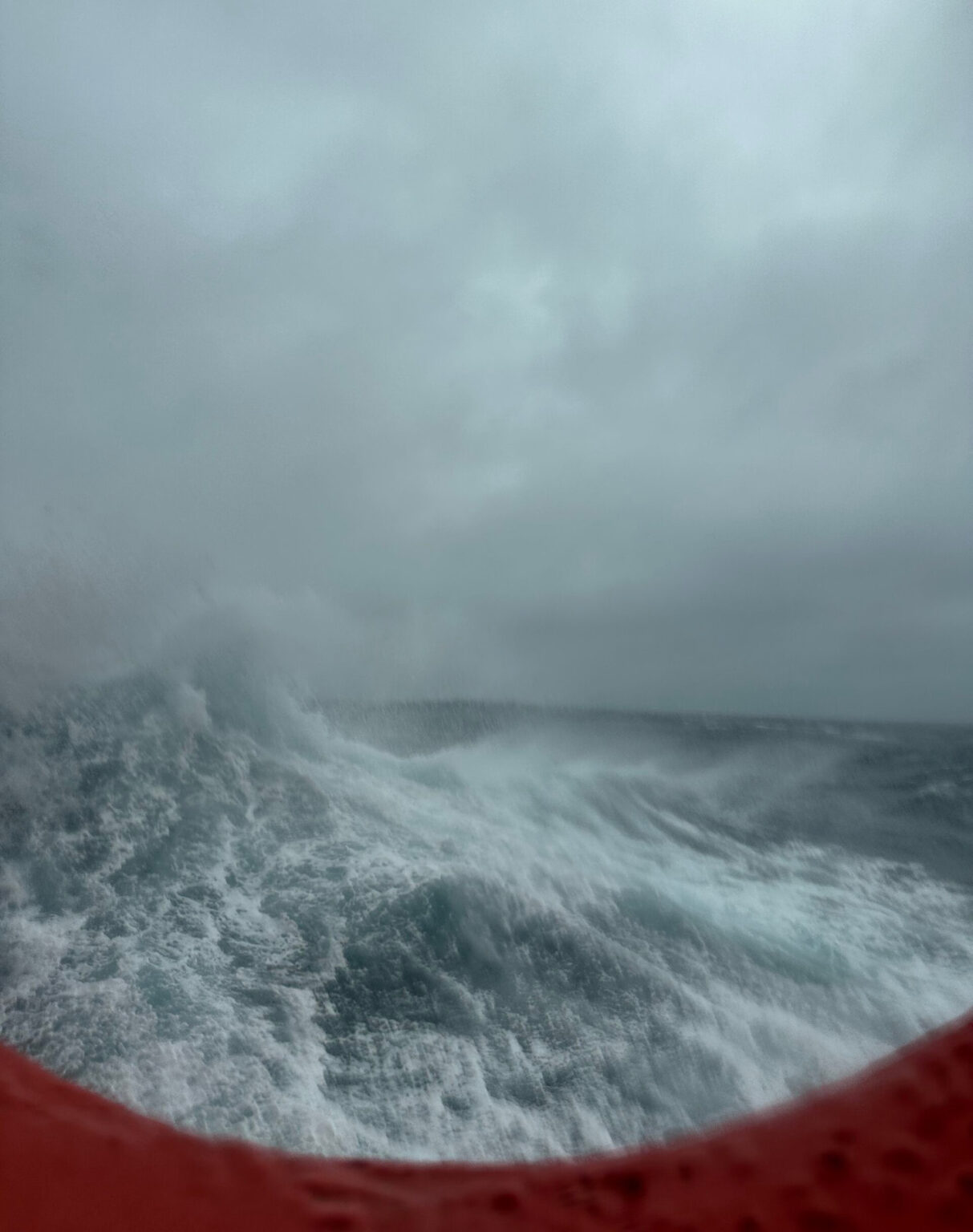
Collaborators
The Year of Weather is co-produced with design and development studio Rectangle (Lizzie Malcolm and Dan Powers), artist and educator Grayson Earle, US radio amateur Bill Liles NQ6Z, and visual artist Golrokh Nafisi.
Rectangle
Scotland-based duo Rectangle (Lizzie Malcolm and Dan Powers) frequently collaborate with open-weather on designs, ideas and code. Currently, the studio is working closely with open-weather to expand and improve the collective’s digital infrastructure, including the Year of Weather platform.
Grayson Earle
Berlin-based artist and educator Grayson Earle is working with open-weather to develop an open source design for a low cost Automated Satellite Ground Station for NOAA satellite images. Previously, Grayson Earle worked with open-weather and Bill Liles to code open-weather apt and co-author the corresponding guide.
Bill Liles
US-based radio amateur Bill Liles (NQ6Z), advisor and longtime friend of open-weather. Currently, Bill is collaborating with open-weather and Rectangle on a major update to the satellite imagery decoder ‘open-weather apt’. Bill was an early reviewer of the DIY Satellite Ground Station Workshop Resource, collaborated on the initial build of open-weather apt, and co-authored the corresponding guide.
Golrokh Nafisi
Tehran-based visual artist, illustrator and writer Golrokh Nafisi is collaborating with open-weather on a series of visual illustrations to accompany the Year of Weather. She previously collaborated with open-weather on the story of the Feminist Anti-fascist Weather Front.
Credits
Satellite images and weather observations by members of the open-weather network, Automatic Ground Station hosts, and others (full list upon completion of the project).
Design and code in collaboration with Rectangle (Lizzie Malcom and Daniel Powers)
Open-weather apt decoder built in collaboration with Rectangle, Bill Liles (NQ6Z) and Grayson Earle
Automatic Ground Station design and development in collaboration with Grayson Earle. Automatic Ground Station API by Rectangle.
Drawings by Golrokh Nafisi